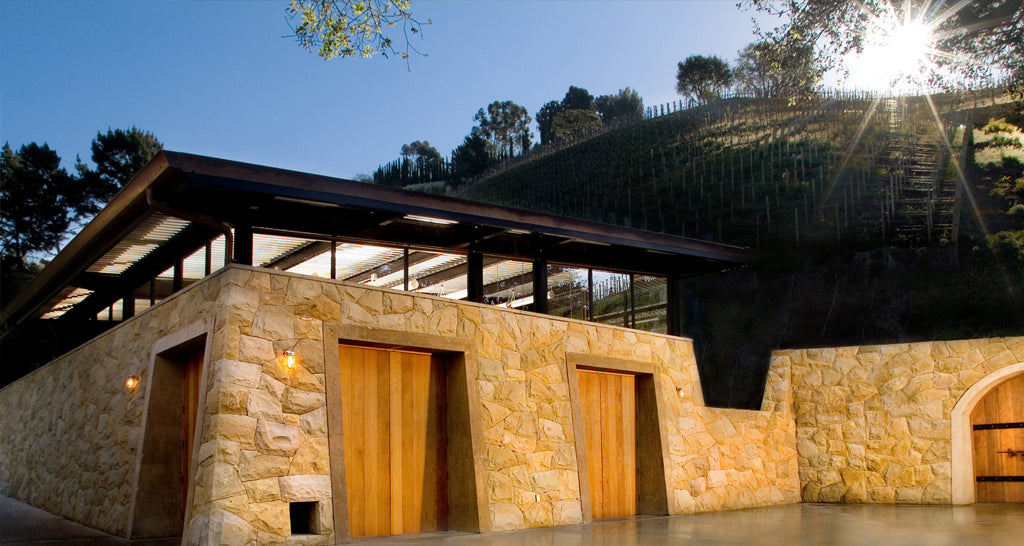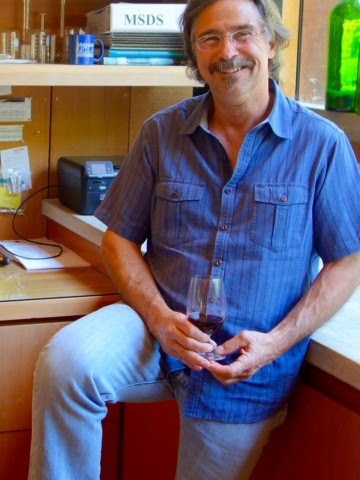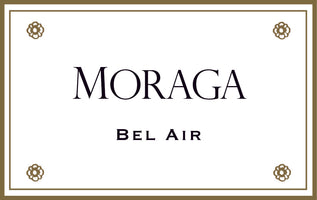
Moraga Vineyards, one of THE most prominent wineries in Southern California; actually the Santa Monica mountains to be more exact! The vineyard is situated about 600-900 feet and five miles from the Pacific Ocean in the Bel Air community.
The winery was purchased by billionaire Rupert Murdoch in 2013 and has kept it still the same as it was originally owned by movie director, Victor Fleming and then later owned by the CEO of Northrop Grumman, Tom Jones, whom Mr. Murdoch bought the winery from. So much Hollywood history is at Moraga Bel Air, but also amazing and delectable wines, run by wine maker, Scott Rich. From the care of each individual vine, to the selection and blending processes, to the hand labeling of each bottle, every effort is taken to produce wine of distinctive style and quality.

Scott Rich, Winemaker at Moraga Estate Vineyards
This is where Scott Rich works his magic. Hired by former owner Tom Jones, who created the vineyard two decades ago out of what was once the horse ranch of director Victor Fleming (of Gone with the Wind fame), Rich now makes wine that has earned the praise of such renowned critics as Robert Parker and the Financial Times’ Jancis Robinson (who cited it as one of her favorite California wineries).
“Most winemakers don’t have this opportunity in a lifetime,” says Rich, eyes twinkling above a small goatee that makes him resemble a young Frank Zappa. A native of Chatsworth, Rich studied enology at UC Davis. Since then, he has had a knack for nurturing vines in unusual places, starting with R.H. Phillips Wine Company, which hired him to create a vineyard north of Sacramento. He eventually launched his own wine label, Talisman, in Glen Ellen, and now splits his time between there and LA. “Look at how [rich in calcium] this soil is,” says Rich, scooping up the earth beneath a row of Merlot grapes ripening in the sun, reflecting off the Pacific glistening between the Santa Monica mountains. “This was all once under water, and the drainage makes it very similar to other great winemaking areas, like Burgundy.”
The constant sea breeze keeps things chillier here than in other local wine regions, lowering the high sugar levels typical to California grapes. “This temperate climate means that the wine is not a Napa fruit bomb type of thing,” notes Rich. “It has a subtle, herbal quality more associated with European wines.”
But it takes micro planning to grow grapes in this sort of environment. As we round toward the lee of the hill, grape clusters grow darker.
But it takes micro planning to grow grapes in this sort of environment. As we round toward the lee of the hill, grape clusters grow darker.“This is a little pocket that gets protected from the breezes, so we planted Cabernet here,” says Rich. “They thrive more in warmer spots.”
At this time of year, the juice of these grapes will be brought down to the large steel fermentation vats in the hypermodern stone and glass winemaking building at the bottom of the hill. Afterward, the red wine will be stored in French-oak barrels lining a 200-foot cave dug into the side of the hill. The vineyard even has its own bottling machine. “Most small vineyards hire mobile units to come and do their bottling for them, but we want to be able to time everything perfectly,” says Rich. “It might seem extravagant for such small batches, but that way we can best control the quality.”



